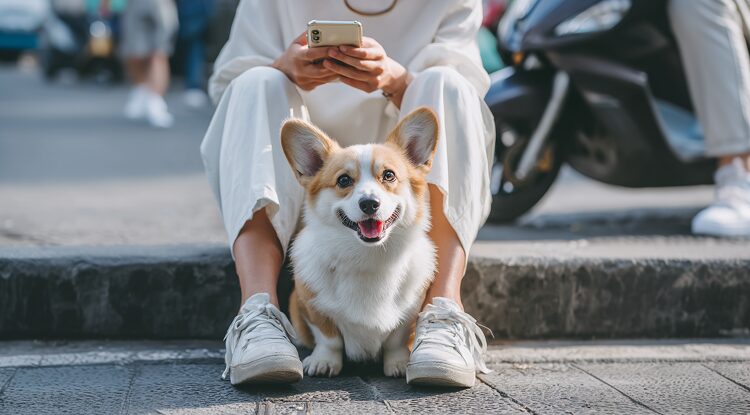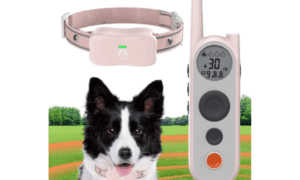Training a dog isn’t about winning or losing. But for dog parents, it can feel that way. You try treats, then scolding, then bribing with snacks while muttering “Why won’t you listen?” under your breath. Sound familiar?
A study that came out in the highly respected academic journal PLOS ONE in 2022 looked at different dog training methods. Dogs that were yelled at and had their leashes yanked were way more stressed, constantly licking lips, yawning, looking tense. Dogs that got treats and praise were much more relaxed.
So, what works in dog training? We’ve examined both approaches, how apps like PawChamp support positive training, and what real owners are seeing regarding lasting behavior change.
Comparing Training Methods
In the 1930s, B.F. Skinner figured out a powerful idea: we repeat behaviors that get rewarded and avoid behaviors that get punished. He called this operant conditioning. There are four ways to do it: give good things, take away bad things, give bad things or take away good things.
Positive Reinforcement Dog Training
Positive Reinforcement means adding something your dog loves right after they do the right thing. The goal is simple: make good behavior worth repeating.
Here are some positive reinforcement examples regarding reward-based dog training:
- Giving a treat when your dog sits on command
- Offering praise and a pat when they come when called
- Starting a game of tug after a successful “leave it”
- Handing out a snack for walking nicely on the leash
Punishment Dog Training
Punishment indicates applying something unpleasant to stop unwanted behavior. Even something as simple as ignoring your dog when they jump up counts as punishment because you’re taking away attention they want.
Positive Punishment
The word “positive” here doesn’t mean good – it’s about adding something your dog doesn’t like right after they do something wrong. It can cause anxiety, aggression, or sneaky behavior. That’s why modern psychology mostly avoids positive punishment.
What can it be?
- Yelling “No!” when your dog barks
- Pulling back on the leash when they pull ahead
- Using a spray bottle when they jump on furniture
- Making a loud noise to interrupt unwanted behavior
Negative Punishment
Works by removing something your dog enjoys. This type of punishment tends to be gentler because it doesn’t add anything scary or unpleasant.
How it looks in practice:
- Walking away when your dog jumps on you (removing your attention)
- Ending playtime when your dog gets too rough
- Taking away a toy when your dog doesn’t listen
- Stopping forward movement on walks when your dog pulls
At its heart, positive reinforcement teaches your dog what to do, while punishment often creates fear and anxiety instead of understanding. If you punish a dog with an aversive stimulus, it’s likely to start fearing you or the place where it happened.
You might stop the unwanted behavior in the moment, but the dog won’t learn what it should be doing instead. And that’s usually how other problems show up later.
How to Train Your Dog Without Punishment?
The American Veterinary Society of Animal Behavior warns that negative reinforcement may be associated with increased fear, anxiety, and aggression. Gentle dog training techniques actually work better.
Let’s say your dog stays calm instead of jumping, and you reward this. You’re basically showing the dog that this choice works out well. It’s a simple way of helping them figure out how to get good things — and making them want to try.
Practical Tips for Desired Behavior
Here are the basics to help you start with confidence.
Reward the Target Behavior
Catch your dog doing something right? Reward them fast. Whether they sit nicely or come when called, give them something good right away: a treat, their favorite toy or just some love.
Be Consistent
Reward the same specific behavior every time. If you’re all over the place with rewards, your dog will be confused. But if you stick to rewarding the same good behaviors, they’ll figure it out pretty quickly.
Redirect Instead of Punish
Got a shoe-chewer? Instead of yelling, swap in something they’re allowed to chew. Then, make a big deal when they choose the right thing. These positive reinforcers work way better than punishment.
Keep Training Short and Fun
Keep training short – five or ten minutes is perfect. Dogs get bored fast, just like kids. Stop while it’s still fun, and they’ll be excited for the next time.
Be Patient
Dogs aren’t robots. According to dog training psychology, they learn at their own pace, just like people. Correction-based dog training builds skills slowly but makes them stick.
How a Dog Training App Can Help?
Training a dog can feel like guessing. Sometimes you’re not sure if you’re handling things the right way or missing the moment. That’s when having help in your pocket really pays off.
A good dog behavior training app gives you tips you can actually use right when stuff happens. Let’s say your dog starts pulling on your walk. You don’t have time to wait for a class or dig through books.
You open an app → check a quick guide → know what to try.
It also lets you train when it works for you. Five minutes in the yard. A few minutes before dinner. And the more often you practice, the better your dog understands you.
PawChamp app works this way. It focuses on common problems most owners deal with: barking, pulling, jumping, or even things like fear and separation anxiety. Everything starts with explaining why these behaviors show up. Then the app takes owners through each step: how to spot triggers, avoid handling mistakes, and build better habits with their dog. The focus is on reshaping the way owners and dogs communicate.
Here is a quick look at the opportunities the app offers.
Easy to Follow Videos
Clear, simple guides that walk you through common issues like barking, pulling on the leash, or jumping up on guests.
Real Trainer Advice
Practical tips and answers from certified dog trainers.
Games and Fun Challenges
A way to keep your dog engaged while building good habits through play.
“Ask Experts” feature
Get personal advice through the free question form.
Train When It Works for You
Morning, evening, during a walk. The app’s ready whenever you are.
Content Tailored by Age
Lessons are built for your dog’s age and stage, so they make sense for where they’re at right now.
With all these features, the app makes it easier to handle everyday challenges. That is why many of our users consider PawChamp the best dog training app – simple, flexible, and built for real-life moments.
Dog Training Methods That Work: Dog Parents’ Opinion
Many dog owners start trying random tips from the Internet or friends’ advice. But when barking, leash pulling, or reactivity don’t improve, they realize they need more than quick hacks.
That’s exactly what happened to one PawChamp user, as we can see from their Paw Champ review:
“I tried YouTube tips, Reddit advice – nothing really stuck. My dog still barked like crazy at the window and pulled on walks. I needed a clear plan. PawChamp gave me simple steps I could actually follow”.
Stories like this come up often. People love that PawChamp feels practical, not overwhelming, and it doesn’t cost a fortune. Many say it finally gave them the structure of dog obedience training they were missing.
Final Thoughts: What is the Best Way to Train a Dog
Answer is simple: use reinforcement techniques that build trust, not fear.
After considering both sides, it’s pretty clear that positive training works better. Most dog owners figure this out quickly. Their pups learn faster when training feels like a game instead of a chore. Plus, those good habits actually stick around when they’re built on trust.
Whether you’re working with a trainer, using a science-based dog training app like PawChamp, or figuring it out on your own, remember this: be patient, keep it positive, and celebrate the small wins. To stop your dog’s bad behavior, you should understand that when dogs mess up, they just don’t get it yet. Show them what you want. Make it worth their while.



































